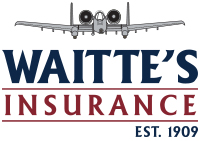 A bit mystical, magical and fun, Halloween draws all kinds of kids in search of candy treats and harmless gags. Unfortunately, this popular childhood staple could run the risk of turning into a nightmare. Taking a few simple precautions can keep the excitement alive and the haunting all in fun without compromising the safety of your home or your little ones.
A bit mystical, magical and fun, Halloween draws all kinds of kids in search of candy treats and harmless gags. Unfortunately, this popular childhood staple could run the risk of turning into a nightmare. Taking a few simple precautions can keep the excitement alive and the haunting all in fun without compromising the safety of your home or your little ones.
TRICK-OR-TREAT SAFETY
1. Un-Mask
Non-toxic face paint makes for a safer costume accessory than a mask. While masks can provide a realistic look, they can limit and block vision, creating a risk of injury. They also hold the potential of restricting a child’s breathing, as some masks can be too tight and constrictive to allow adequate breathability. There are many online tutorials available on how to create the perfect face paint look for your desired costume.
2. Know the Route
While an adult should ALWAYS accompany younger children, be sure older trick-or-treaters know the route to safe treats. Review safety and emergency protocol with all children before the big night.
3. Get Glowing
Choose costumes which are bright and easily seen in darkened areas. Add reflective tape to costumes and trick-or-treat bags to increase visibility for passing motorists.
4. Share the Wealth
Host a candy swap at home to exchange favorites among siblings or a few friends. With the loot spread out, use this as an opportunity to discard items with signs of tampering, such as spoiled, unwrapped or looking otherwise suspicious.
PUMPKIN CARVING SAFE PRACTICES
1. Set the Stage
Be sure the carving or decorating area is clean and well lit. The gooey mess of pumpkin innards creates slippery surfaces which affect the stability of both the pumpkins and tools.
2. Get Crafty
For younger celebrators, gather the art supplies and let them decorate safely without the sharp carving tools. Paint, permanent markers and glue on accessories such as pom-poms and yarn make for one-of-a-kind creations.
3. Choose Tools Wisely
Specialty tools work best to carve those infamous pumpkin characters, according to Consumer Reports. Small, easy-to-handle tools designed to tackle this gooey job decrease risk of injury.
4. Extinguish the Flame.
Consider an alternate lighting source for those beloved jack-o-lanterns. Flashlights and battery-operated candles offer safer glowing creations than flamed candles. If you insist on that genuine candle flame look for your jack-o-lantern, never leave lit flames unattended and always extinguish them properly before the end of the evening.
HOLIDAY HOME PROTECTION
1. Be the Light
Though it may slightly hinder the creepy mood and atmosphere, replace burned out light bulbs and light your home’s exterior to increase visibility. This allows residents to more clearly see any potential pranksters that may be tempted to pull a ‘trick’ rather than ask for a treat.
2. Park It
Park your vehicles in a garage (if possible) to deter pranksters. If a garage is not available, park your vehicles as closely to your home as possible. Never keep valuables inside your vehicles on Halloween night.
3. Lock It Up
While continually locking the front door in between visitors should go without saying, it offers protection for your home when you are distracted by the festivities. Be sure to keep all additional entryways locked, especially while handing out candy at your main entrance.
4. Be Alert
Even amid the jovial atmosphere, be certain to keep your eyes open to your surroundings. Consider handing out treats in the driveway for better sight lines and home security.
Preventing a Halloween nightmare is as simple as following the suggestions listed above. Waitte’s Insurance Agency encourages people of all ages to enjoy all facets of the holiday but to do so responsibly!
In the unlikely event of a natural disaster or your home is vandalized, do you know what your current Homeowners Insurance policy covers? Call us today at (860) 886-1961 to review your coverage.

 As a business owner, you have a legal and moral responsibility to provide as much of a hazard-free and safe workplace for your employees as possible. Many businesses, however, do not do everything in their power to keep their workplaces safe. Managers sometimes neglect to enforce various safety regulations or cut a few corners to save time and/or money. Even if precautions are put in place, many places of work don’t properly train their employees in how to avoid danger or they don’t provide the necessary follow-up to ensure their employees remain alert, vigilant, and aware. Because of this, employees in these businesses are more at risk for various dangers and are unsure of what to do in such an emergency.
As a business owner, you have a legal and moral responsibility to provide as much of a hazard-free and safe workplace for your employees as possible. Many businesses, however, do not do everything in their power to keep their workplaces safe. Managers sometimes neglect to enforce various safety regulations or cut a few corners to save time and/or money. Even if precautions are put in place, many places of work don’t properly train their employees in how to avoid danger or they don’t provide the necessary follow-up to ensure their employees remain alert, vigilant, and aware. Because of this, employees in these businesses are more at risk for various dangers and are unsure of what to do in such an emergency.
 If you have ever received a traffic ticket, your first instinct may have been to fight it – after all, many people believe that the citation was unjust and that they did not deserve the harsh penalty that they received. However, roughly only 3 percent of drivers who receive traffic citations actually contest them in court, and choosing to do so relies purely on the circumstances surrounding the ticket. You’ll want to ask yourself the following questions before you consider fighting Connecticut traffic violations
If you have ever received a traffic ticket, your first instinct may have been to fight it – after all, many people believe that the citation was unjust and that they did not deserve the harsh penalty that they received. However, roughly only 3 percent of drivers who receive traffic citations actually contest them in court, and choosing to do so relies purely on the circumstances surrounding the ticket. You’ll want to ask yourself the following questions before you consider fighting Connecticut traffic violations Connecticut drivers aren’t strangers to driving in the snow. However, we can all use a little reminder as to what to do to properly prepare for the winter season; which can put exponential wear and tear on your vehicle. There are a few simple precautions you can take to help your car survive the winter in good condition. Wear and tear cannot only affect the life of your vehicle, but also your car insurance premiums.
Connecticut drivers aren’t strangers to driving in the snow. However, we can all use a little reminder as to what to do to properly prepare for the winter season; which can put exponential wear and tear on your vehicle. There are a few simple precautions you can take to help your car survive the winter in good condition. Wear and tear cannot only affect the life of your vehicle, but also your car insurance premiums. From the moment a young driver receives his or her driver’s permit and well into their adult years, the ability to drive becomes a tent-pole for independence and transportation. However, like many other factors that can begin to diminish with age, certain individuals lose the ability to drive for a number of reasons once they reach senior citizen status. It is important for Connecticut driving seniors to stay sharp and identify when they might start having difficulty operating a motor vehicle. While it may not be ideal, certain seniors may need to make the decision to turn over their car keys indefinitely for the safety of themselves and other motorists on the road.
From the moment a young driver receives his or her driver’s permit and well into their adult years, the ability to drive becomes a tent-pole for independence and transportation. However, like many other factors that can begin to diminish with age, certain individuals lose the ability to drive for a number of reasons once they reach senior citizen status. It is important for Connecticut driving seniors to stay sharp and identify when they might start having difficulty operating a motor vehicle. While it may not be ideal, certain seniors may need to make the decision to turn over their car keys indefinitely for the safety of themselves and other motorists on the road. With freezing cold temperatures, you need to make sure to protect your home. In addition to having Norwich CT House Insurance, you must take the necessary steps to keep your home safe and ready for winter. Your best bet is to safeguard against the following winter complications, but in even a worst-case scenario, having proper Norwich CT house insurance will lessen any stressful situation that may arise.
With freezing cold temperatures, you need to make sure to protect your home. In addition to having Norwich CT House Insurance, you must take the necessary steps to keep your home safe and ready for winter. Your best bet is to safeguard against the following winter complications, but in even a worst-case scenario, having proper Norwich CT house insurance will lessen any stressful situation that may arise. Connecticut personal umbrella insurance is a safeguard that protects you from incurring unexpected expenses as the result of an accident. And while this sounds like the pitch for the auto and homeowners insurance policies that you already have, it’s actually a bit different.
Connecticut personal umbrella insurance is a safeguard that protects you from incurring unexpected expenses as the result of an accident. And while this sounds like the pitch for the auto and homeowners insurance policies that you already have, it’s actually a bit different. While the month of February includes Valentine’s Day, the time to consider those near and dear to your heart, it’s also the month to remember to care for your actual heart. February is American Heart Month, which is a designated time to raise awareness of the factors that contribute to good heart health. Among these factors are exercising regularly, a diet featuring plenty of fresh fruits and vegetables, and controlling stress. Without these daily habits, not only will your physical health suffer, but your Connecticut Health Insurance premiums could also be affected.
While the month of February includes Valentine’s Day, the time to consider those near and dear to your heart, it’s also the month to remember to care for your actual heart. February is American Heart Month, which is a designated time to raise awareness of the factors that contribute to good heart health. Among these factors are exercising regularly, a diet featuring plenty of fresh fruits and vegetables, and controlling stress. Without these daily habits, not only will your physical health suffer, but your Connecticut Health Insurance premiums could also be affected.